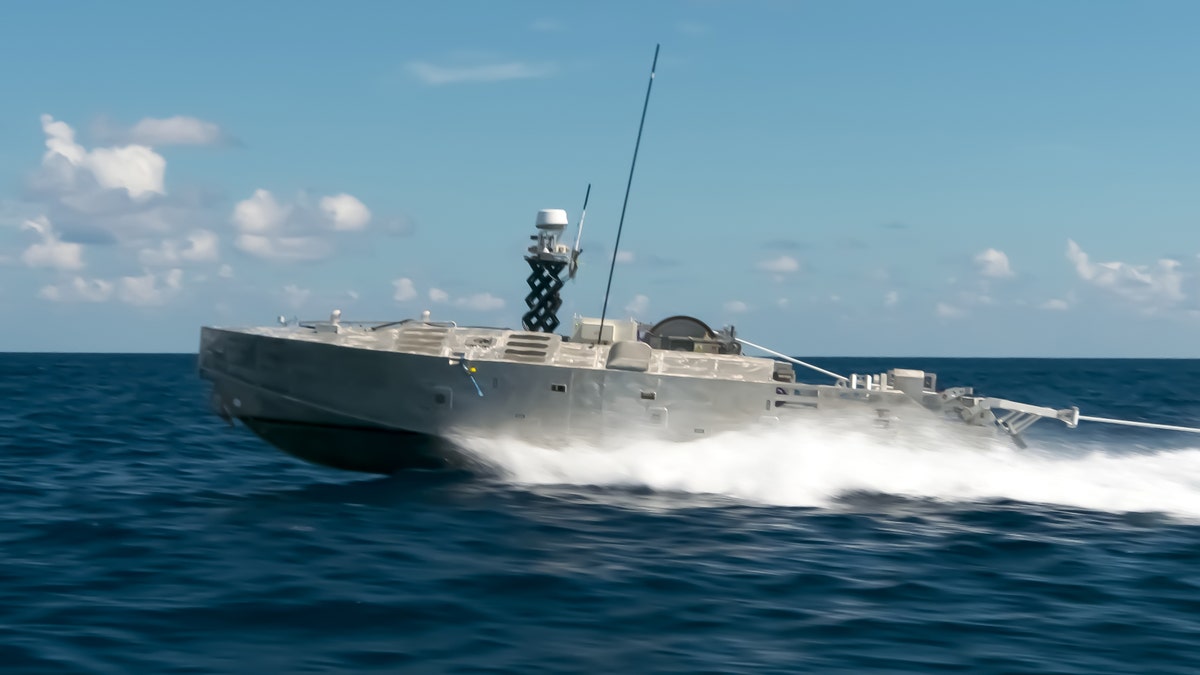
CUSV (Textron Systems)
Armed surface drones at sea could surveil and attack enemy targets, conduct forward reconnaissance on enemy positions and provide human decision-makers with combat essential command and control data -- all as part of massive, great power war on the open seas.
Maritime drones can have both offensive and defensive uses, all while keeping sailors and surface ships at safer standoff ranges. Navy strategies see them operating in coordinated groups of drone boats networking vital war information between surface, air and even undersea regions across wide-spanning segments of ocean. Such missions are fast being increasingly enabled by advances in autonomy, fortified by computer algorithms performing a growing number of procedural functions historically done by humans. Of course, developers are quick to emphasize that, regardless of advances in autonomy, current doctrine requires that human decision-makers remain "in the loop" when it comes to making decisions about attacking with lethal force.
Naturally, enabling these kinds of technical advances are part of a massive strategic shift for the Navy as it pivots its attack concepts to incorporate an expanded fleet of surface and undersea drones. The initiative, as described by Capt. Pete Small, program executive officer, Unmanned Systems, includes new levels of autonomy, advanced command and control, emerging software and various weapons configurations. Speaking in January at the 32nd annual Surface Navy Association Symposium, Small said many of these efforts to advance autonomy at sea are part of an emerging Navy program called Unmanned Maritime Autonomy Architecture.
NAVY MAY ARM NEW DESTROYER WITH CONVENTIONAL MISSILE ABLE TO HIT ANYWHERE ON EARTH IN AN HOUR
“We need them (surface drones) to match fleet conops (Concepts of Operation) that employ multiple USVs (Unmanned Surface Vehicles) operating in proximity with each other,” Small added, explaining that new software and technical interfaces “allow us to upgrade autonomy on the ships and integrate additional payloads.”
Small said the Navy was now working on Interface Control Documents for ocean drones to explore and integrate “autonomy and communications” operations. One such effort, involving a Cooperative Research and Development Deal between Textron Systems and The Naval Surface Warfare Center, Dahlgren, Va., is exploring demonstrations with Unmanned Surface Vehicles armed with guns, rockets and possibly even various kinds of missiles. “We are planning to develop and showcase a proof of concept for surface warfare packages; the CUSV (Textron Common Unmanned Surface Vehicle) mission set would be surface warfare, which included integrating direct and indirect fire systems to be used in a variety of ways,” Wayne Prender, senior vice president of applied technology and advanced programs, Textron Systems, told Warrior Maven in an interview.
The testing and demonstrations are evolving through a Cooperative Research and Development Agreement between Textron and the Navy, intended to explore, prototype and ultimately deploy the armed Unmanned Surface Vehicles.
NAVY STRATEGY FAST-TRACKS NEW WEAPONS FOR 'OFFENSIVE' ATTACK
As communications and networking technologies continue to evolve rapidly, drones will increasingly be able to function in a cross-domain capacity, meaning across air, sea, land and undersea operations. A human at a control station, using a low bandwidth connection, can perform command and control functions without needing to actually drive the vessels. Small elaborated upon this, explaining that the Navy’s evolving surface and undersea command and control technology - will integrate with air platforms developed by Naval Air Systems Command.
The Navy and ONR (Office of Naval Research) are already immersed in the development of a variety of USVs, including a sonar-equipped, mine-detecting Unmanned Influence Sweep System, or UISS, for the Littoral Combat Ship and other vessels. The UISS is carried by a Textron-developed Common Unmanned Surface Vehicle or CUSV. The CUSV, in development since before 2009, can travel for more than 20 hours carrying up to 4,000 pounds at speeds of up to 20 knots, Textron information states. Also, it is engineered to withstand waves up to 20 feet.
The Navy and Textron are planning an upcoming demonstration to refine requirements for arming surface drones, assess the technology, perform force protection exercises and replicate mock combat scenarios.
CLICK HERE TO GET THE FOX NEWS APP
Defensive uses for swarm boats could introduce a substantial increase in ship protection; should an enemy seek to overwhelm ship defenses with a speeding swarm of small boat attacks or a barrage of incoming weapons.




















